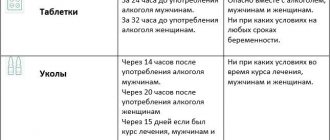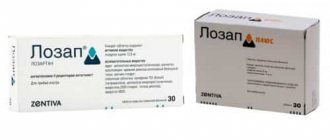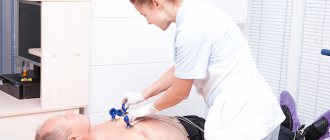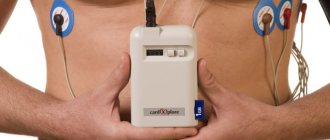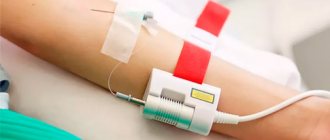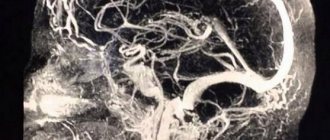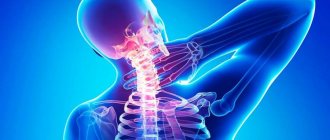Varicose veins are a serious vascular disease, and if left untreated, it will lead to the formation of blood clots. To prevent this from happening, you need to visit a phlebologist at the first symptoms - pain, swelling, leg fatigue.
There are several modern methods of treating this disease. One of them is the external use of ointments, gels and creams for varicose veins. However, with the help of these drugs it is not always possible to achieve the desired result.
Medicinal properties of horse chestnut
Horse chestnut is widely distributed throughout Europe, the Caucasus and Central Asia.
This plant is extremely rich in microelements and organic chemical compounds. Which have medicinal and beneficial properties for the human body.
Useful substances in horse chestnut:
- Glycosides;
- Tannins;
- Fixed oils;
- Ascorbic acid;
- Thiamine;
- Pectins;
- Carotenoids;
- Flavonoids;
- Mucous substances.
Due to its rich composition of useful substances, chestnut is widely used in folk medical practice.
Areas of application of preparations based on horse chestnut:
- In inflammatory processes;
- increased swelling;
- manifestations of thrombosis;
- lesions of the spleen;
- the occurrence of uterine bleeding;
- for arthritis;
- bronchitis;
- gout;
- tuberculosis condition of the lungs;
- heart diseases;
- with anemia;
- gastritis of varying severity.
Substances in chestnut have properties that reduce blood clotting. Therefore, it is extremely effective in the treatment of vascular diseases.
How chestnut helps your feet
With weak tone, the walls of blood vessels become thinner and stretch. As a result, they cannot provide the necessary blood circulation, which leads to increased blood pressure and blood stagnation, and the appearance of unaesthetic “patterns” of nodules and writhing veins on the legs. Over time, cholesterol plaques and blood clots form, which clog blood vessels and can even pose a threat to life.
Chestnut foot medicine can relieve unpleasant symptoms and improve the general condition of the body. Its effectiveness is due to the presence of a number of useful substances:
- esculin strengthens capillaries, prevents the development of rosacea and the formation of blood clots, relieves swelling;
- escin strengthens the walls of veins, increases venous tone, thins the blood, prevents cholesterol from forming plaques, relieves inflammation and has an antibacterial effect;
- rutin reduces capillary permeability, dissolves cholesterol plaques, expands the lumen of blood vessels, and activates blood circulation;
- tannin binds protein, as a result of which the walls of blood vessels become denser, stronger and more resistant to irritants;
- kaempferol activates regeneration processes, promoting the healing of trophic ulcers, and also stops inflammatory processes, restores metabolism and prevents the formation of malignant tumors.
Horse chestnut fruits provide effective results in the treatment of varicose veins, atherosclerosis, thrombosis, thrombophlebitis, arthritis, and arthrosis. In 85% of cases, after 3 weeks, swelling and itching disappear, heaviness in the legs goes away, and swollen veins become much less noticeable.
Important!
Horse chestnut fruits will have the maximum effect for thinning the blood in the initial stages of the disease.
Benefits of using horse chestnut ointments
Ointments have a local effect on the affected area of the vessel, so they are very widely used in modern medical practice.
The main advantages of this dosage form are that the ointment quickly relieves swelling and eliminates inflammation.
The effectiveness of ointments is very high, because the active substance is an active biological substance. Also, ointments, gels and creams based on horse chestnut are an excellent preventive measure.
With regular and frequent use of this drug, the condition of the blood vessels in the legs significantly improves. Swelling and inflammation disappear.
Indications for use of ointments
Indications for the use of ointments based on horse chestnut are divided into 2 groups:
- Preventative;
- Medicinal.
As a drug for treatment, ointments are prescribed:
- in cases of the initial stages of development of varicose veins in the legs;
- various thrombophlebitis.
As a prophylactic agent, these ointments are used for swelling of the lower extremities. As well as thrombosis and vascular changes as a result of trauma.
Is it possible to make your own ointment with horse chestnut for varicose veins?
Yes, there is nothing complicated about preparing ointment at home. To do this, you will need tree fruits and animal fat. You need to take 50 grams of fruit and grind it to flour. Then place the chestnut in a non-stick bowl and mix with animal fat (badger fat will do).
Place on the fire and simmer until low heat for about 40 minutes. After this, remove the ointment from the heat and let it cool. Transfer the resulting product to a convenient, clean container.
This method of preparing the product is very convenient and does not require much effort. At the same time, the resulting ointment can be used for prophylactic purposes and as a component of complex therapy for varicose veins. An ointment with this composition improves blood circulation in the legs, has a venoprotective effect and reduces feelings of fatigue.
Contraindications to the use of ointments
The use of creams and ointments based on horse chestnut has a number of contraindications:
- Do not use medications if you are allergic to the components they contain;
- Use is prohibited if there are wounds on the skin surface;
- The presence of skin diseases such as psoriasis or dermatitis is also a prohibiting factor;
- Pregnancy and lactation;
- Inflammatory processes in the intestinal tract;
- Cannot be used in the diagnosis of renal failure;
- Low blood clotting.
Contraindications exist due to the fact that the components included in the drug are quickly absorbed through the walls of blood vessels. They are also distributed through the bloodstream throughout the body.
How horse chestnut works for vein diseases
Ointments, foot creams, gels with horse chestnut extract act as blood thinners.
In turn, this significantly reduces the likelihood of blood clots in the cavities of blood vessels. Also, horse chestnut substances effectively strengthen the walls of capillaries and veins of the human lower extremities.
Also, ointments have a tonic effect on the walls of blood vessels.
Let's take a closer look at the effect of the main substances that make up horse chestnut:
- Saponins have a beneficial effect on the elasticity of the venous wall, reduce swelling, and have a lymphatic drainage effect;
- Tannins have a bactericidal and anti-inflammatory effect;
- Ascorbic acid, or vitamin C, also has an anti-inflammatory effect. It also effectively improves the functioning of the immune system;
- Carotenoids significantly strengthen cell membranes;
- Thiamine improves hematopoietic processes and generally normalizes the functioning of the human cardiovascular system;
- Glycosides increase the diameter of the lumen of blood vessels;
- Pectins reduce blood cholesterol levels and, as a result, prevent the formation of plaques;
- Organic acids increase the strength of the vascular wall and stimulate hematopoiesis.
Questions from patients from the Internet:
How effective is ointment for veins and blood vessels on the legs?
The effectiveness of ointments and gels for the treatment of varicose veins has been greatly exaggerated. In other words, ointment for veins and blood vessels on the legs is nothing more than a marketing ploy that has little correspondence with reality.
Horsepower gel for veins, what are the real reviews from doctors?
You are unlikely to find real reviews from doctors and phlebologists who practice modern treatment of varicose veins about the horsepower gel. Various ointments and gels in the treatment of vein pathology are really used as maintenance therapy, nothing more.
Does heparin ointment for legs really help against varicose veins and fatigue?
Heparin ointment is indeed used in the complex treatment of pathology of the veins of the lower extremities by many leading phlebologists, including specialists from our phlebology center. When used correctly, this ointment helps eliminate symptoms of heaviness and fatigue in the legs. However, no ointment can somehow affect either varicose veins or the main symptoms of chronic venous insufficiency.
Do you use ointments and gels for varicose veins and thrombophlebitis of the lower extremities in your practice?
The specialists of our phlebology center actually use ointments and gels in the complex treatment of varicose veins and its complications, thrombophlebitis. In this situation, ointments and gels are not the main treatment, but only additional local therapy for the symptoms of varicose veins and thrombophlebitis of the lower extremities.
Popular ointments
The pharmacy assortment is replete with various names of drugs based on horse chestnut. The most popular are:
- Troxevasin;
- Lyoton;
- Gerbion;
- Reactive;
- Venoruton;
- Heparin ointment;
- Venzol;
- Ginkor.
These are not all medicines containing horse chestnut.
Their variety is much greater. It is worth noting that their principle of action on the vessels of the legs is almost the same. But you should not use them without first consulting a specialist.
Also, when choosing the right product, many people wonder what is better - cream, gel or ointment.
It is quite difficult to compare these dosage forms. They differ both in the concentration of the active substance and in the general chemical composition.
Gels are made on a water basis. They are transparent and quite viscous.
Creams contain both a water component and fatty components. They are very quickly absorbed into the skin due to their composition. But it is important to know that the penetration depth of the active substance is quite low.
Ointments are the fattest preparation. They are characterized by the greatest degree and depth of penetration of the active ingredients into the human body. When applied, the ointment is not absorbed into the skin, so it must be used carefully. Because it can stain clothes.
Making ointment at home
Currently, it is quite popular to make ointments from horse chestnut at home.
This is due to the fact that the effectiveness of such a drug is no lower than that produced in an industrial environment, and the cost is lower.
One of the simplest recipes for making horse chestnut ointment at home is:
- You need to take 5 tbsp. dry and crushed horse chestnut leaves and add vegetable oil. Boil the resulting mixture over medium heat for about 30 minutes. Then the resulting ointment must be cooled and allowed to brew for several days. The drug is ready for use.
- 5 tbsp. chopped horse chestnut mixed with 2 tbsp. l. sage Add 4 tbsp to this mixture. l. pharmaceutical chamomile and 1 tbsp. potato starch. Add about 200 g of chicken fat to the mixture of herbs and starch. Mix thoroughly and place in a water bath for about 2.5 hours. After this, cool and leave for a day. After this time, the workpiece must be boiled again and then filtered. The drug is ready.
When choosing a medicine, consultation with your doctor is required.
Varicose veins are the scourge of modern times. However, preparations based on horse chestnut help effectively fight this disease. They are also a good way to prevent disease.
Benefits of Professional Treatment
You cannot self-medicate with ointments for varicose veins alone. In this case, there is a risk of aggravating the disease, and then surgery cannot be avoided. To choose an effective treatment strategy, it is best to consult a phlebologist. The doctor will examine you and send you for examination. Only after this will he make a diagnosis, on the basis of which a course of treatment will be prescribed.
The Medicenter network of clinics employs experienced phlebologists and functional diagnostics doctors who use the latest methods for treating varicose veins: both surgical and non-surgical.

